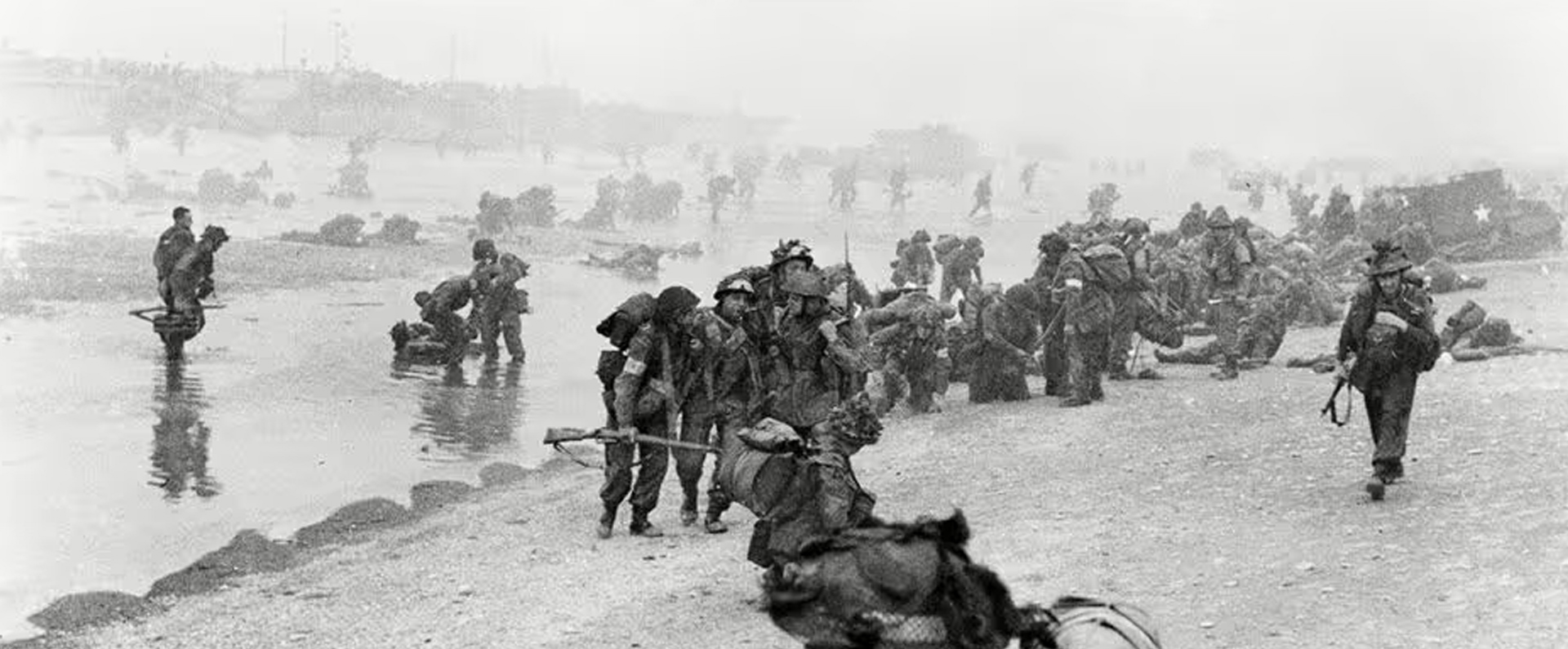
Published in Britain at War in May 2019.
Sergeant George Monk MM
George Monk was awarded the Military Medal for gallantry during the post Second World War Malayan Campaign and for what his official citation described as “a brilliant little action”.
The campaign was a counter-insurgency action fought by British and Commonwealth troops from 1948 to 1960 against the Malayan National Liberation Army, the military arm of the Malayan Communist Party. Monk’s bravery in action resulted in the death of two enemy bandits.
George Monk was born on 28 June 1922 and enlisted into the Suffolk Regiment in October 1941. During the Second World War, he served both at home and in North West Europe with his regiment and the Royal Artillery, the Bedfordshire and Hertfordshire Regiment and the Royal Warwickshire Regiment.
After the war, he remained in the Army serving with the Duke of Wellington’s Regiment. However, he transferred to 22 Special Air Service Regiment upon its formation in May 1950.
Monk was mentioned in the Special Air Service Regimental Gazette on a number of occasions for his actions during the Malayan Campaign, but it was for an act of bravery in early October 1951 that he was recommended for the Distinguished Conduct Medal (DCM), although this, in fact, led to the award of the Military Medal (MM).
An account of the action appears in J.B. Oldfield’s book, The Green Howards in Malaya (1949-52). The author, who had served as a major in The Green Howards, described how, at the end of September 1951, ‘A’ Company had been in a contact with the enemy, an encounter in which three terrorists were wounded. Intelligence suggested the terrorist gang had moved northwards to the area covered by ‘C’ Company.
With this knowledge, it was agreed to put a platoon from ‘C’ Company into the South Gemas Forest Reserve in order to try to bring about another firefight in which the enemy would, hopefully, be killed or captured. On 1 October, 8 Platoon, commanded by Monk, entered the jungle equipped with four days’ rations. They had only marched for an hour and a half, and covered no more than two miles, when the platoon halted. At this point, Corporal Horsefield heard the sound of voices only a short distance away.
Oldfield then goes on to quote from a long account of the day’s events that was written at the time by an unidentified military source, though this person was clearly not Monk himself given that his names was spelt incorrectly throughout. The report said: “Sergeant Monck reconnoitred forward with Corporal Horsefield and discovered that there was in fact an occupied bandit camp immediately in front of them. The ground was not very advantageous, for fifty yards ahead there was a little mound, or an old ant-hill, and then a hollow about fifteen yards wide. The bottom was obviously marshy, but, worse still, it was covered with thick palm, the kind whose leaves are apt to be spikey and through which it is quite impossible to move quietly. Through the jungle on the far side of the hollow could be seen a basha [canvas open-style shelter]. Sergeant Monck brought the platoon up and made them lie down, with the leading section behind the little mound where it could be could observe across the hollow.
“The first thing to do was to find a way round the marshy hollow if possible. Sergeant Monck, therefore, went off to reconnoitre to the left on his own. He found that there was a reasonable approach on that side of the camp, but there was also a sentry there, standing by a dead tree about twenty yards from the camp, so that side was out as far as an unobserved entry into the camp was concerned.
“Sergeant Monck now had to decide how he was going to attack…but Sergeant Monck remembered that just over a year before, 7 Platoon had made a very successful attack on a camp in the Kuala Pilah area, and had completely surprised the occupants of the camp in their bashas., owing to very heavy rain. From what they could see of the sky it looked as if rain was likely, and he therefore decided to wait for a shower of rain to cover the noise of the crossing of the marshy hollow and to make the sentries less alert. If no rain came by 1330 hours he would attack without it.
“There was possibly well over an hour to wait, and in the meantime the Chinese Liaison Officer came up to the front and tried to make out what the bandits were saying. He estimated that there were about fifteen of them. This proved to be a very accurate estimate; the majority were, of course, Chinese, but Tamil was spoken by one or two.
“One thing astonished the whole platoon, and that was the awful noise they were making. There was no attempt at keeping silence at all; they were talking at the tops of their voices; they were coughing and spitting in the true Eastern fashion, and the fact that they were having a meal was apparent from the clashing of mess-tins together. The unmistakable clicking of mah jhong [a game] tiles could also be heard…
“At 1325 hours, just as Sergeant Monck was about to attack without the rain, it started to rain, and the platoon attacked. The plan was simple. The assaulting sections were Corporal Horsefield on the left, Corporal Ramsey on the right, Sergeant Monck moving with Corporal Ramsey. Lance-Corporal Fox was to remain as a reserve at the little mound, and when the firing in the camp started he was to fire grenades from the E.Y. rifle over the camp to impede the bandits in flight; two were to be fired half left, two half right, and one centrally. Corporal Ramsey’s section, with Sergeant Monck on the right, reached the edge of the camp rather in advance of Corporal Horsefield’s section, and while they were waiting for them to come up, Corporal Horsefield’s section was spotted bya sentry, who threw a grenade. The section commander immediately opened fire, and Sergeant Monck, Corporal Ramsey and his section charged the camp. As was to be expected, all the occupants were in their bashas, and, except for one who was shot where he lay, the others ran out and from behind trees put up some resistance, throwing in all a total of four grenades. The Lance-Corporal Fox started firing his E.Y rifle and bursting his grenades hehind the camp. A whistle was blown, and the bandits fled into the jungle in all directions.
‘When the remainder of the platoon came up a thorough search of the area was made, and three blood trails were found, one leading a large food dump which contained four cwts. of rice, a side of bacon, and a lot of tinned fish. None of the blood trails could be followed for more than a hundred yards as the heavy rain washed out all traces. In the camp itself in addition to the dead bandit, fourteen packs were left by the terrorists, together with 400 round sof .303 ammunition and two Bren magazines. The camp itself was an old one, but the bashas had not been reproofed with the usual attap leaves. Waterproof sheets, which had been camouflaged from the air with leaves and vines, had been used instead.
‘When wireless contact had been made with the Company base, 8 Platoon wwere ordered to remain in the area and continue the search for the wounded bandits, and 7 Platoon would join them and carry out the dead bandit and the packs and ammunition.
‘While Sergeant Monck was speaking on the 68 set, it was reported to him that a bandit had been seen approaching the camp. The bandit was lost to view for a minute or two, and then reappeared ten yards from the sentry. Unfortunately he spotted the movement of the rifle coming into aim and dived into the undergrowth, providing only a fleeting target, and he was missed. He must either have been a courier or one of the gang returning to the camp, oblivious to the attack.
‘’The next day 7 Platoon joined 8 Platoon, and carried the dead man and the spoils. 8 Platoon continued searching for the area and, late in the day, one patrol searching some way from the camp smelt the unmistakable smell of something very dead, an came upon another dead bandit with an American crabine lying by his side. 8 Platoon was then ordered back to the Company base with the second bandit.
“The search was not abandoned, however, and 7 Platoon under Second-Lieutenant Tyzack was again sent down to the same area on 3rd October. Two hours after leaving the camp the leading man, Corporal Fletcher, came face to face with a lone bandit coming in the opposite direction on the track. Corporal Fletcher immediately opened fire with his carbine and killed him. The man had probably been sent back to look for survivors of the gang, or to see if we had left anything important in the camp.”
The ten days of targeting terrorists had been successful, but on 6 October 1951 there had been a major setback: a car in which Sir Henry Gurney, the High Commissioner, and his wife were travelling was ambushed on the Gap Road up to Fraser’s Hill. Gurney was killed, leading to a massive desire for revenge from the British force in Malaya.
The recommendation for Monk’s proposed DCM amounted to a summary of the lengthy report from which I have already quoted. However, it concluded: “Sergeant Monk’s leadership was faultless, throughout this brilliant little action, and it was entirely due to his great skill, determination and coolness, and above all to his extraordinary patience under the very noses of the enemy, that such a successful conclusion was achieved.” His MM was announced on 15 December 1951.
After his tour of Malaya ended, Monk spent some time as a training sergeant in the Airborne Forces Depot before rejoining the Regiment (SAS) and, once again, serving in Malaya. During his first patrol back in Malaya, he captured a communist terrorist. In September 1957, Monk took over “Q’ side of D Squadron, 22 SAS. He was discharged from the Army when his period of engagement ended on 6 October 1963, at which time his conduct was described as “exemplary”.
It is not known what happened to Monk after he left the Army but he died in Salford, Greater Manchester, in June 1977, within days of his 55th birthday. I purchased his medal group several years ago and I feel immensely privileged to be the custodian of this courageous man’s gallantry and service medals.
Download a PDF of the original Britain at War article
For more information, visit:
LordAshcroftOnBravery.com


